Ornithology Exam 2
1/140
There's no tags or description
Looks like no tags are added yet.
Name | Mastery | Learn | Test | Matching | Spaced |
|---|
No study sessions yet.
141 Terms
What do feathers do once they reach full size?
They die (lose blood supply)
Feather functions
- Insulation/protection
- Flight
- Display, camouflage, and other color functions
Follicles
sites of feather attachment
Pterylae
feather tracts
apteria
areas without feathers (between pterylae)
pterylosis
pattern of pterylae and apteria
types of feathers
- Contour
- Down
- Semiplume
- Filoplume
- Bristle
- Powder down
contour feathers
large feathers that give shape to a bird's body and help with flying
- like shingles on a roof
- protects against water/temperatureCon
Types of contour feathers
- Body feathers
- Flight feathers
Contour feather construction
Study This:
barbs
Rachis
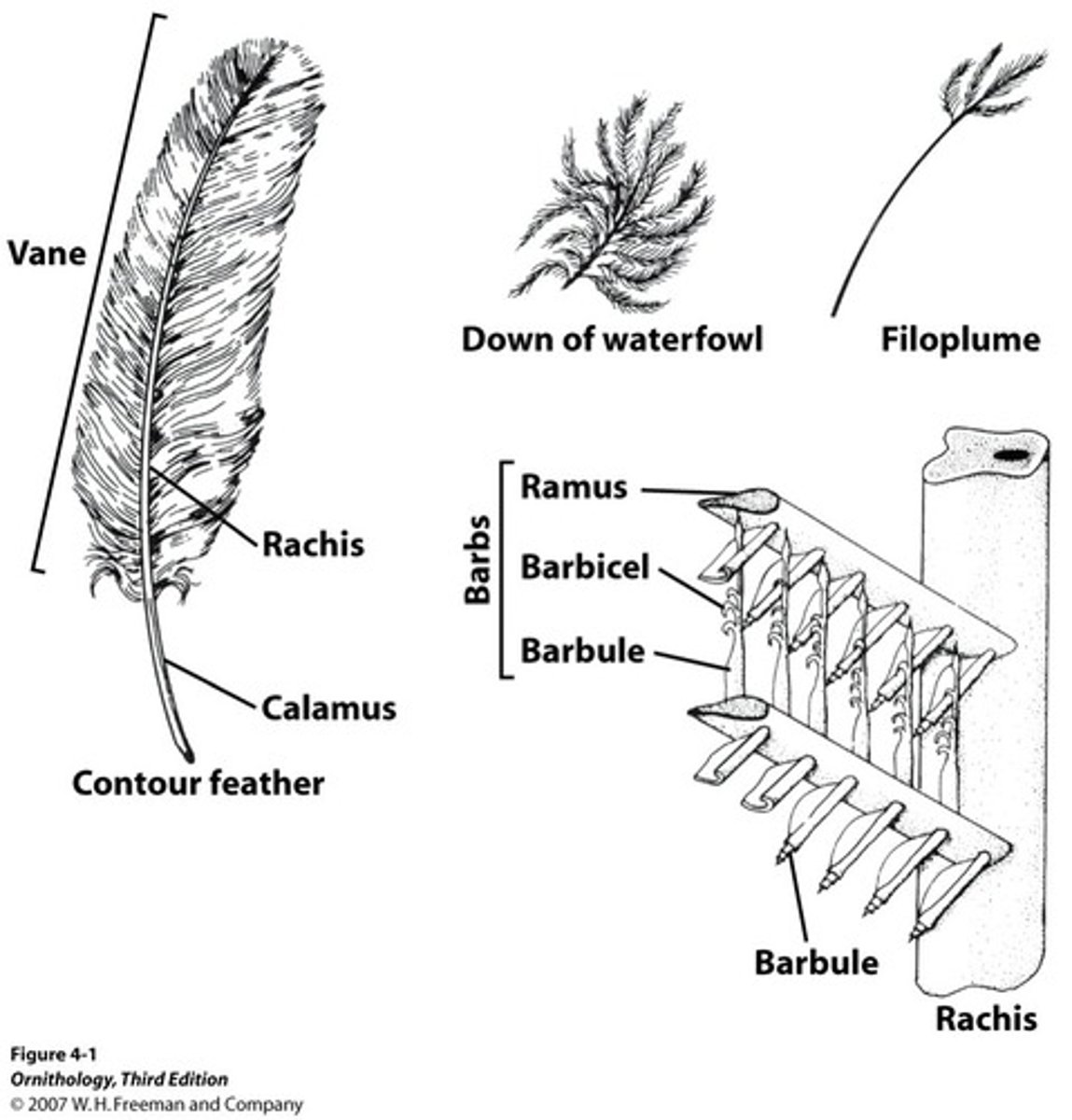
remiges and retrices
flight feathers

remiges
Primaries: help with flight most
- attach to hand bones
- 10 most common
Secondaries:
- Attach to ulna
- 6-40 (hummingbirds-albatrosses)
- 10 most common
- more variation in length of secondaries

Owl Remiges
Built for silence (small hair like structures on remiges)
Retrices
Attached to the pygostyle (fused caudal vertebrae and associated musculature)
- 12 common
Down feathers
Feathers with smooth barbules but no hooked barbules
- soft used for insulation
- beneath contour feathers
- lacks rachis or rachis shorter than longest barb

body down
- down of adult birds
- Trap air, excellent thermal insulation
- Most dense in water birds, especially northern ducks
- very cold oriented
Natal Down
first plumage upon hatching
- young remaining in nest are warmed by parents (altricial)
- Young that leave the nest soon after hatching (precocial)

altricial
Offspring that are completely dependent on parental care
precocial
Offspring that can walk, run, swim, and feed themselves at hatching
What's unique about natal down?
- Lacks barbules on outermost barbs (fuzzy appearance)
- Produced by follicles that will later produce contour feathers (unlike body down)
Semiplumes
- Under contour feathers with light insulation
- barbules lack hooks and barbs don't form vein but the rachis is longer than the longest barb
- provide streamlined form in overlying contour feathers
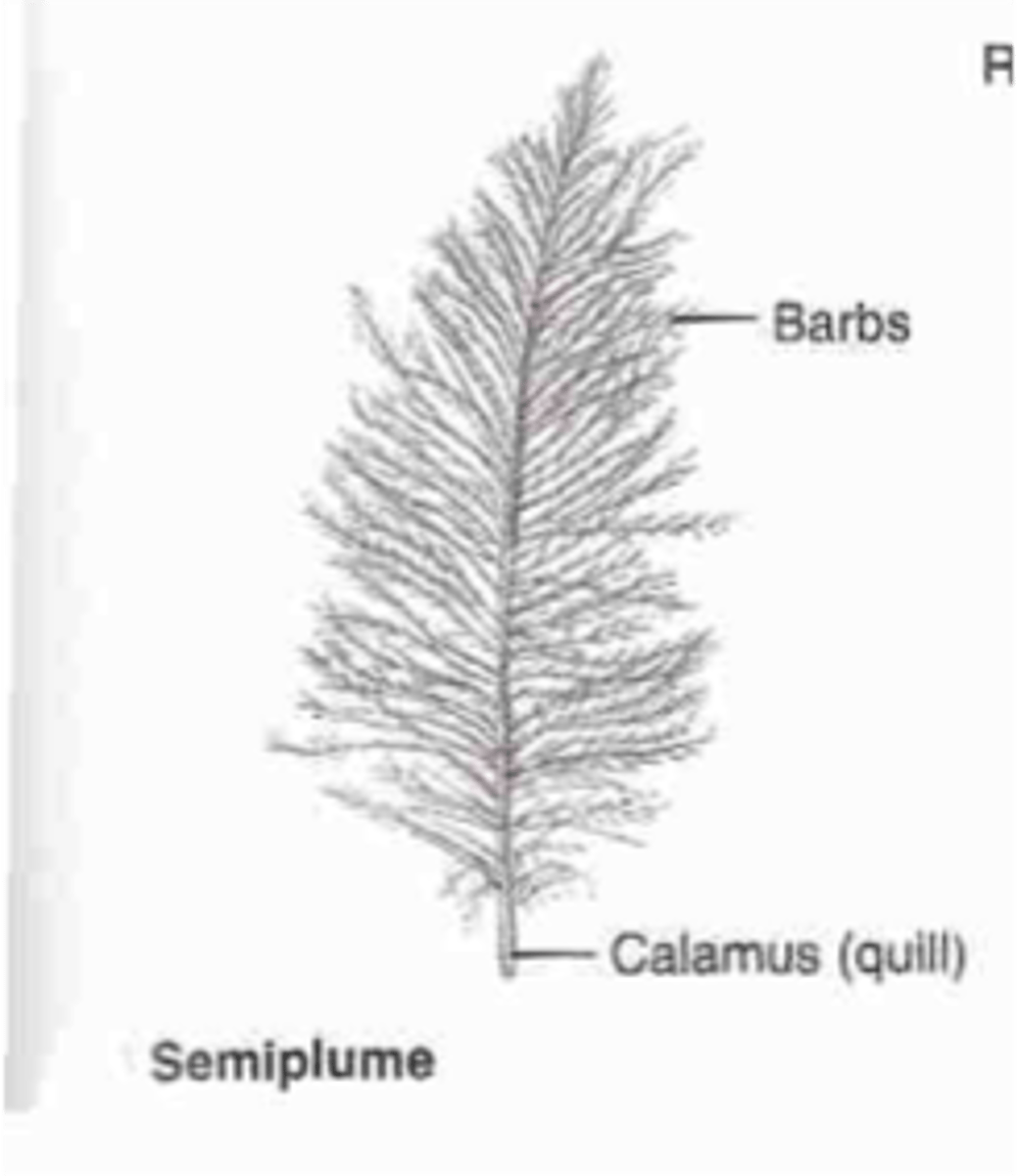
Filoplumes
- Hair-like feathers that are stiff
- Bare rachis with barbs only at tip
- sensory structures associated with follicles that monitor feather movement within feather coat (determine if feathers are properly aligned)
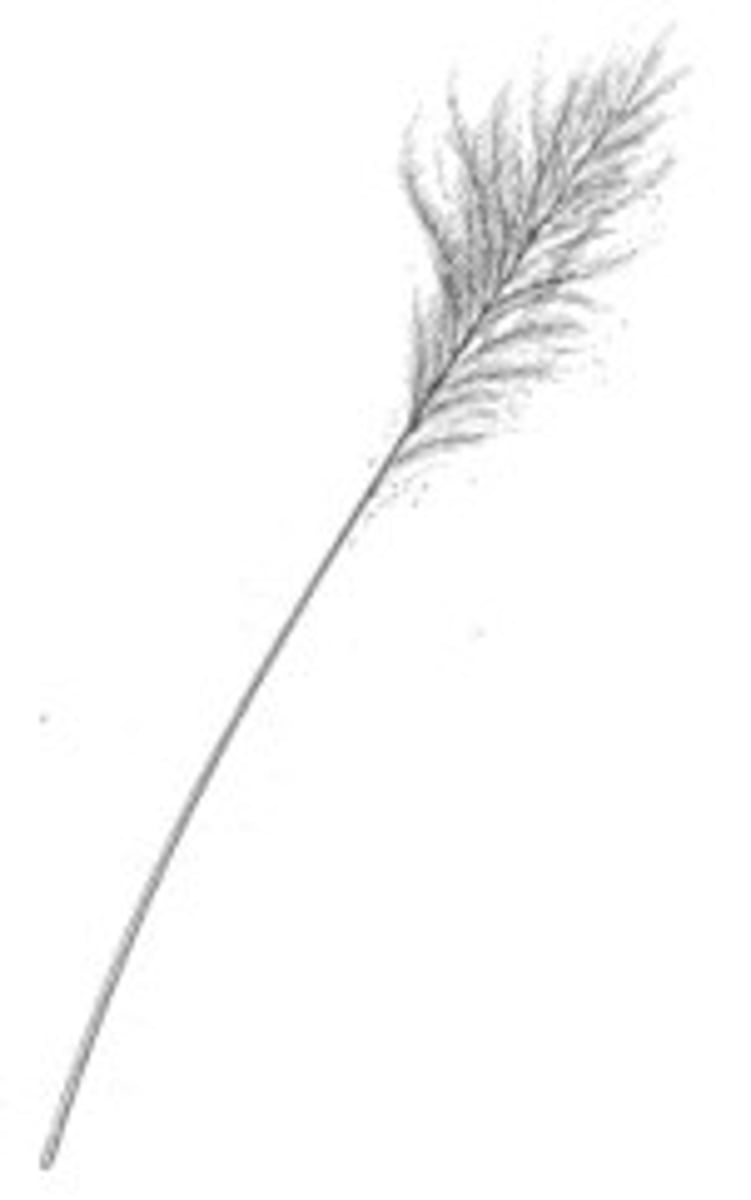
Bristles
- specialized contour feathers which have a stiff rachis and lack barbs along outer tip
- Usually found around eyes and mouth (rictal bristles)
- May help protect eyes and detect movements of prey in bill

rictal bristles
bristle-like feathers around the corner of the mouth
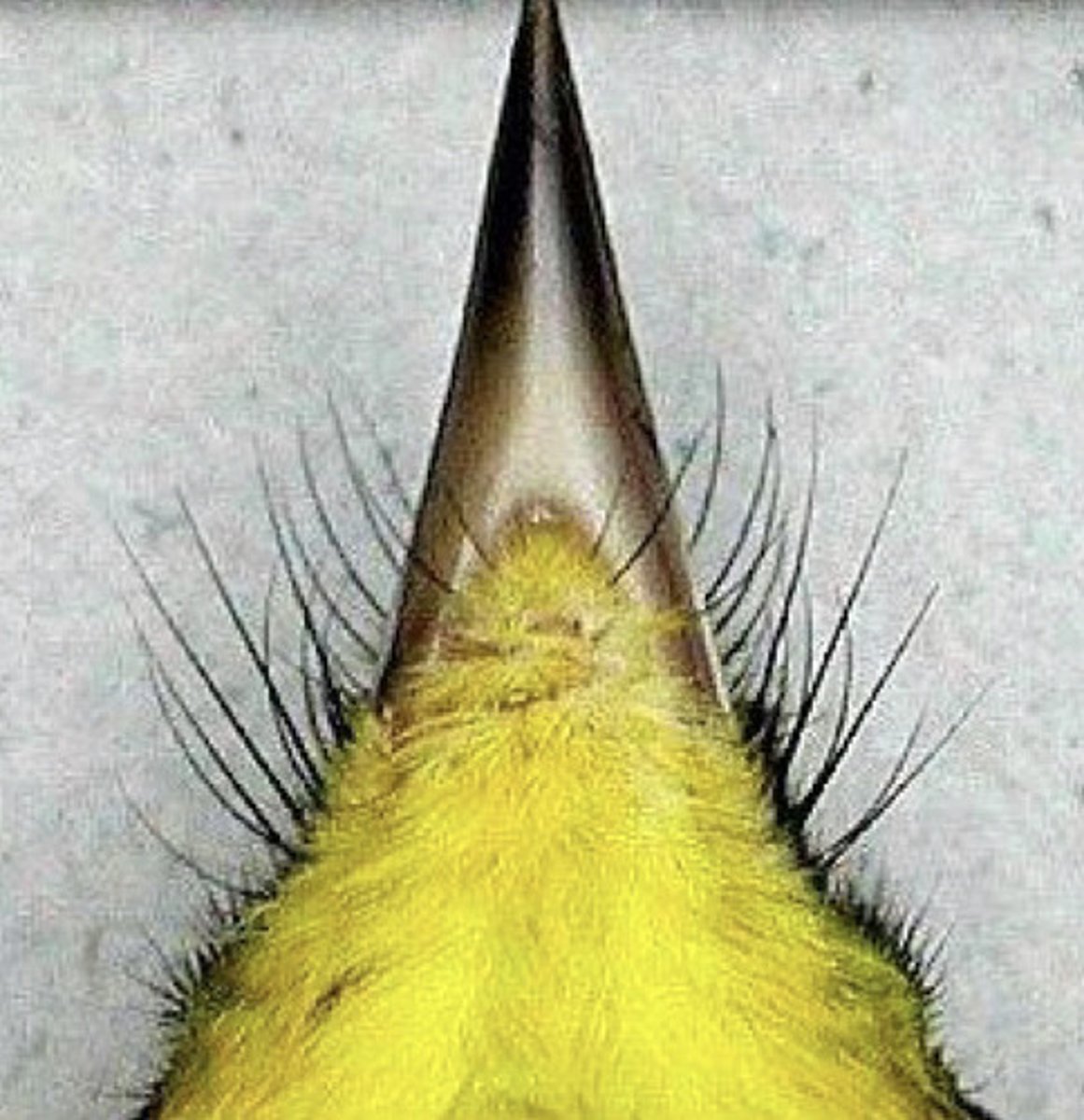
Powder Down
- Specialized feathers found only in a few groups of birds (parrots & herons)
- Similar to fluffy contour feathers or body down
- Disintegrate at tips to produce fine powder
- May function in waterproofing or stain prevention
- never molted grow continuously
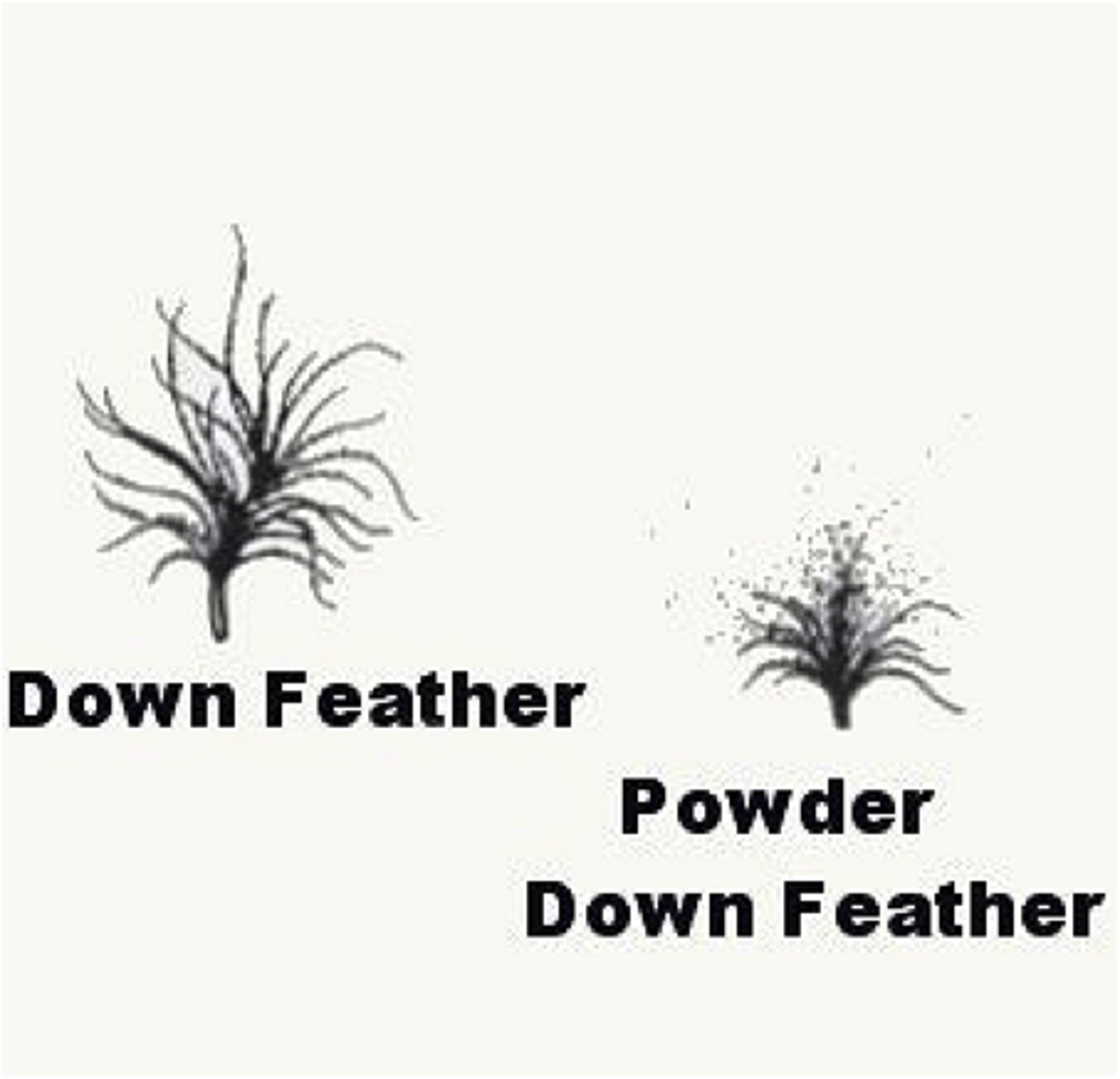
Feather care
- Most feathers are non-living and must be maintained
- Preening
Preening
in birds, the act of grooming and maintaining their feathers
- waterproofing feathers (uropygial gland)
- conditioning feathers
- Helps prevent infections
uropygial gland
gland located at the base of the tail that secretes oil for preening feathers (in front of retrices)
- oil or preen gland
Bathing in birds
- Water used
- dust used
(controls ectoparasites and helps clean plumage)
sunning
spread postures to enable sun rays to dry/condition feathers
anting
- Birds use ants to remove ectoparasites from their feathers
- may be passive (allow ants to swarm over body) or active (rub ants or other chemically-potent objects over body)
Feather growth
- Papillae on the skin develop into follicles
- Pin feathers (growing feathers enclosed within feather sheath) develop from follicles
blood quills
Blood vessels in dermal tissue extend into feather shaft, nourishing the growing feather
Feather colors
Pigment colors- caused by chemical compounds in feathers
Structural colors- reflected colors created when sunlight is reflected off of feather structures
Melanin feather pigment
gray, black, brown, and buff colors
(synthesized from tyrosine and other amino acids)
Porphyrins feather pigment
red, brown, green, and pink colors
(Nitrogen and metal-containing molecules that are modified amino acids)
Carotenoids feather pigment
bright red, yellow, and orange colors
(Cannot be synthesized, must come from diet)
structural colors
Caused by scattering of certain wavelengths of light (usually BLUES) by air vacuoles in keratinized feather cells or other structural layers in feathers
- Produces bright blues, greens, and iridescence
plumage
a bird's feathers collectively
natal plumage
the plumage a bird is hatched with
Juvenal plumage
the plumage a bird leaves the nest with (replaces natal down)
Subadult (immature) plumage
replaces juvenal plumage
Definitive (adult) plumage
worn by adult birds
Age to Maturity
The age at which birds reach definitive plumage varies among bird groups
- Many songbirds <1 year
- Gulls 3-4 years
- Eagles 4-5 years
- Albatrosses 7-8 years
Seasonal Plumage Change
- Some adult birds only have 1 plumage per year (e.g. geese)
- Many birds have 2 or more different plumages that are replaced seasonally
Molt
The replacement of feathers of one plumage with feathers of another plumage
asynchronous molts (most birds)
gradual molts (feathers replaced sequentially)
synchronous molt (some birds)
whole feather tracts replaced (e.g. waterfowl flight feathers)
- can not fly when feathers fall out
Basic plumage
an adult bird's main plumage each year that is produced by a complete molt (NON-BREEDING PLUMAGE))
Alternate plumage
the plumage that results from a PARTIAL molt of the basic plumage before breeding (BREEDING PLUMAGE)
Supplemental or supplementary plumages
some birds have 3 or more plumages per year (happen as needed (e.g. harsh winters causing feather damage)
Molt Terminology
- most widely accepted system is based on the acquired plumage
Molt Ecology
- Replacing feathers is energetically & nutritionally expensive
- During molt, bird feathers are less efficient
(birds with a synchronous wing molt are vulnerable when flightless; those with asynchronous wing molts have impaired flight ability for LONGER PERIODS)
When does molting usually occur?
- during times of low energy demand (not during migration or when breeding)
- occurs in habitats with sufficient food to support feather growth (and sometimes with places to hide if flightless)
- sometimes switch to high protein foods
- Birds often stop the molt and resume it later as needed (e.g. migration)
shock molt or fright molt
is the shedding of many feathers at once when frightened or threatened
Eye color of birds
most standard color is dark brown
- white
- yellow
- orange
- blue
- red
uncommon eye colors
- eye color of some species change with age
- sexual dimorphism in eye color in some species
Bill
- Consists of hard, horn-like keratinized skin overlying bone
- inner layers are alive and replace worn away outer layers
What influences bill shape
Diet
seabird bills
Have bill modifications to dispose of excess salt (tube-nosed birds)
Birds of prey bills
have hooked bills and ceres (fleshy bases)
Bird feet
Birds walk on their toes (tarsometatarsus serves as the lower leg bone in birds)
- most birds have 4 toes
- Toes are numbered by the number of toe bones (phalanges)
- toe 4 has the most bend & toe one has the least bend
name of bird toes
phalanges
zygodactyl
having the toes arranged two in front and two behind

anisodactyl (most common)
one toe faces the rear, other three face forward

Heterodactyl (least common)
3, 4 in front
1, 2 in back
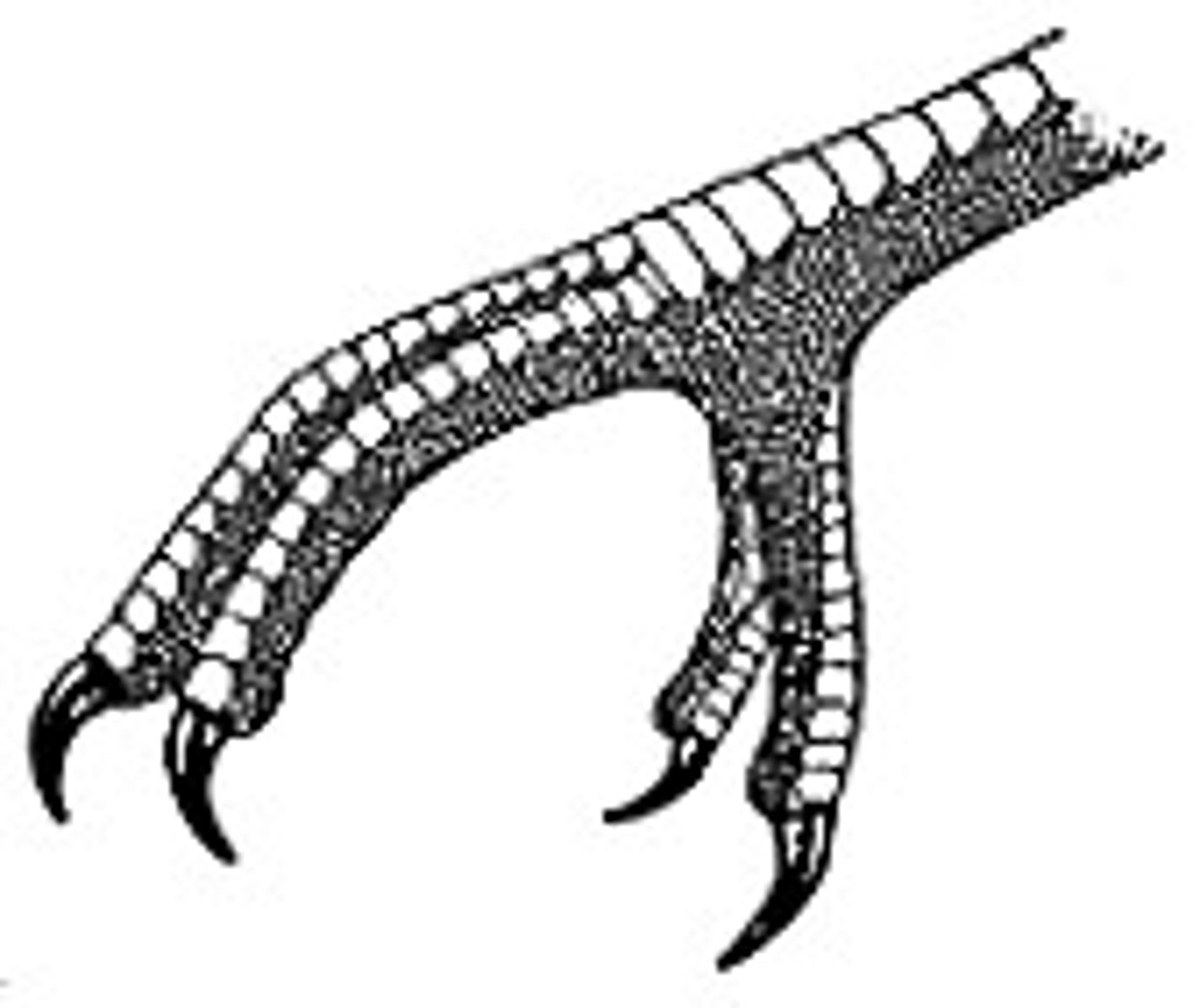
Palmate webbing
between 3 forward toes

Totipalmate webbing
webbing of all 4 toes
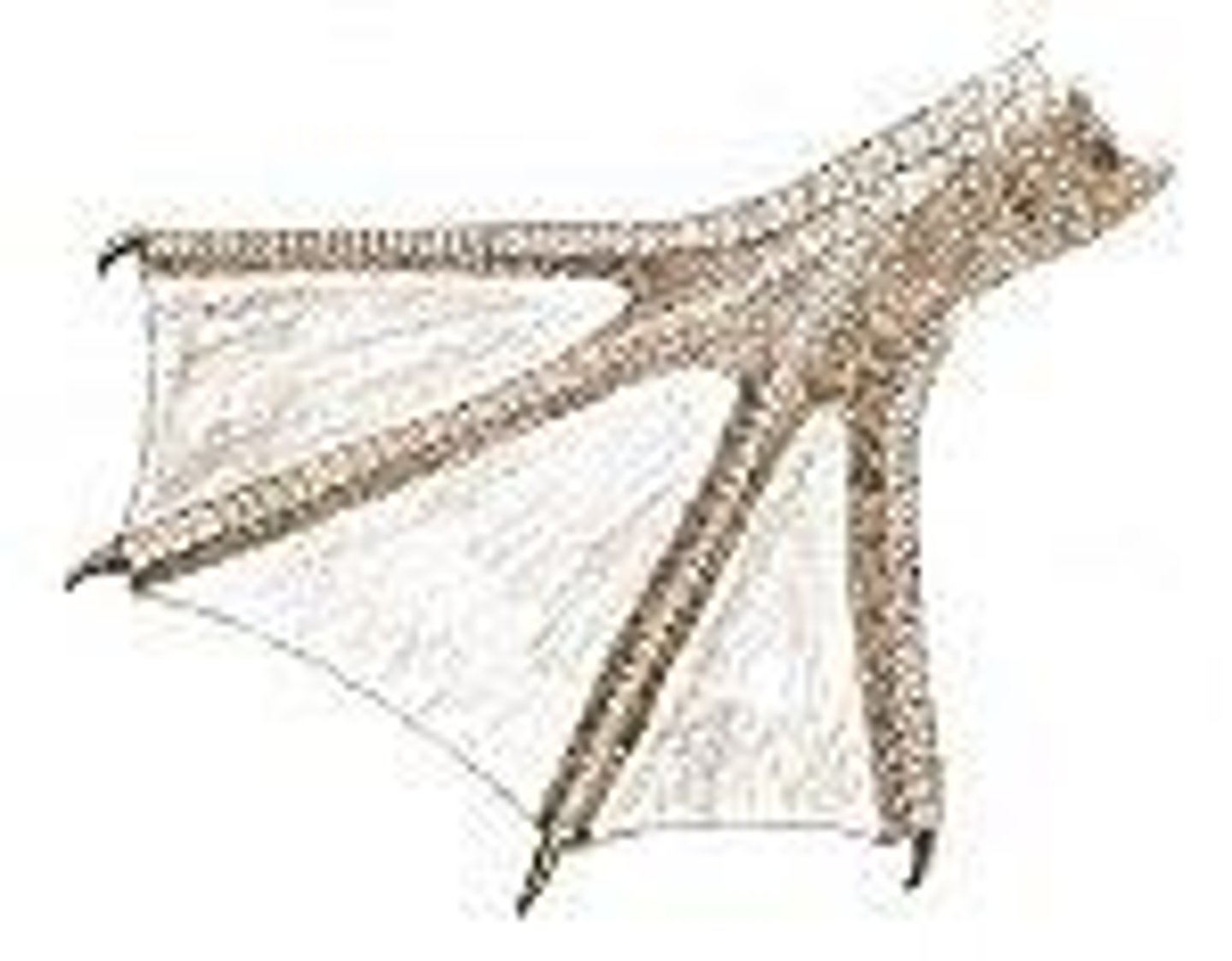
semipalmate webbing
Webbing doesn't extend to toe tip; or just 1 side
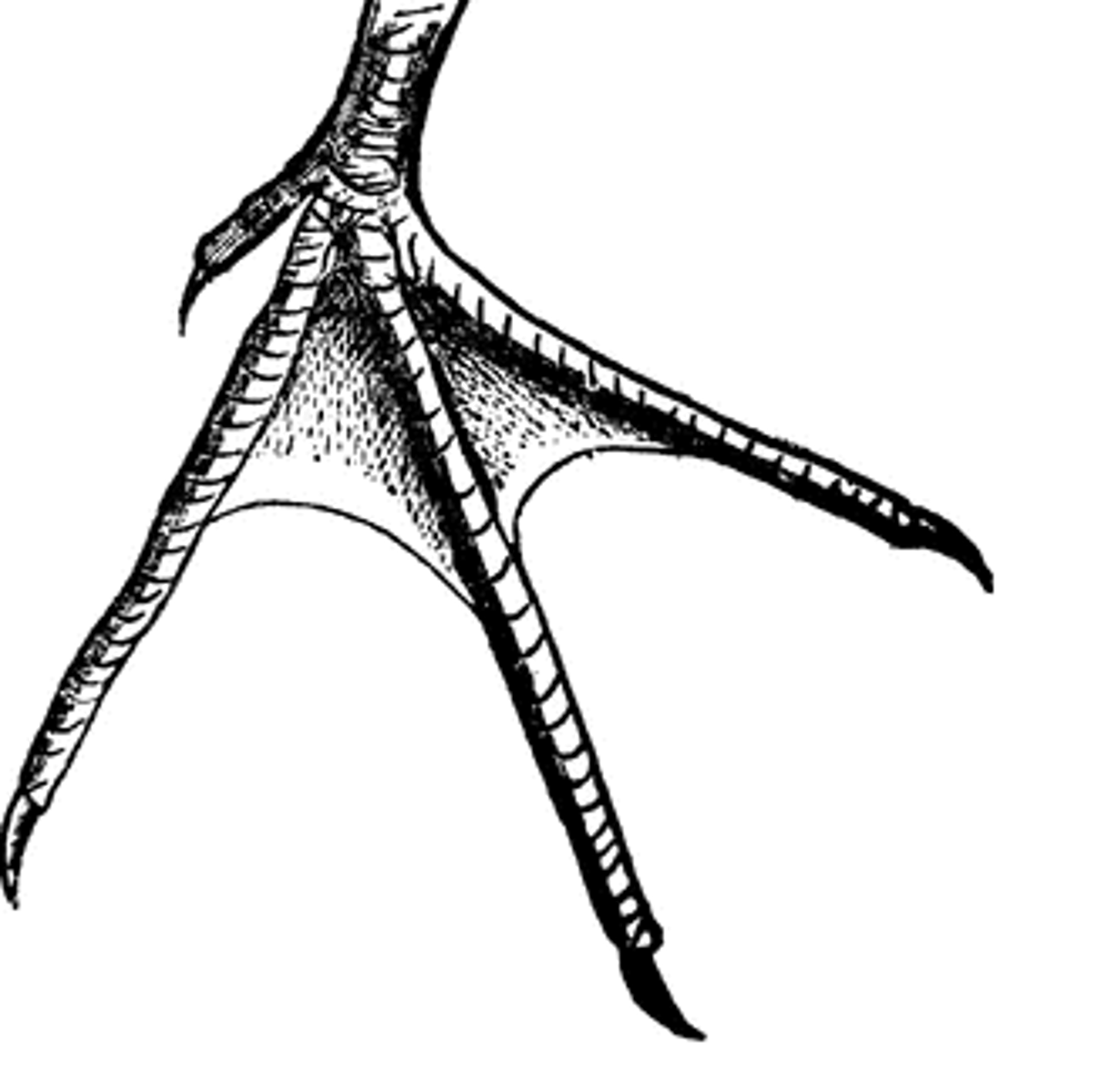
Lobate webbing
Each toe has its own web
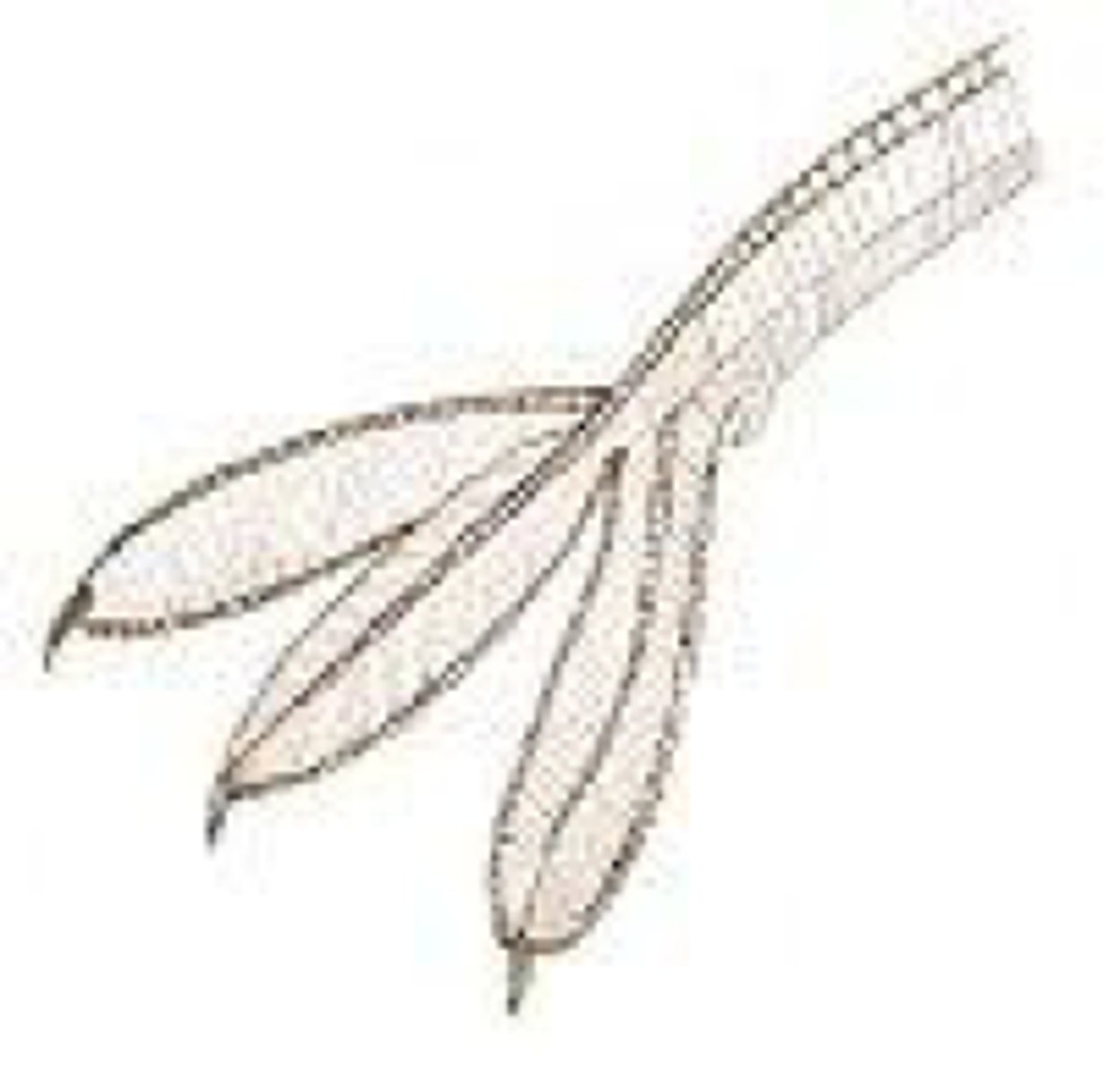
raptorial
bird of prey foot
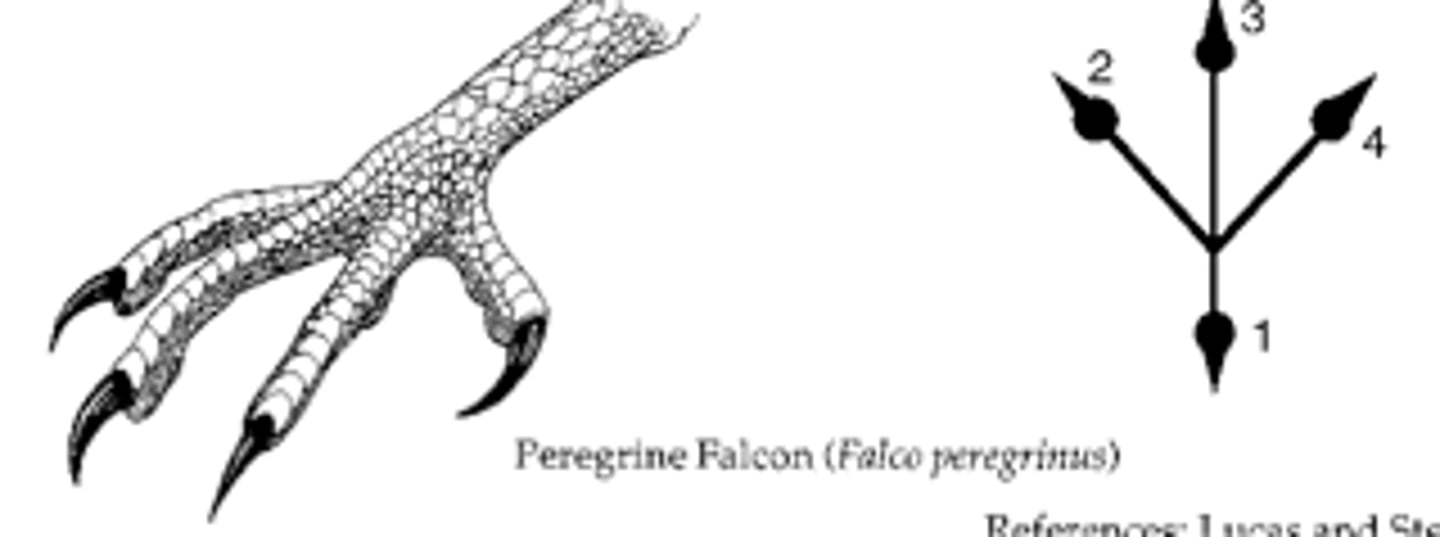
scutellate
large scales
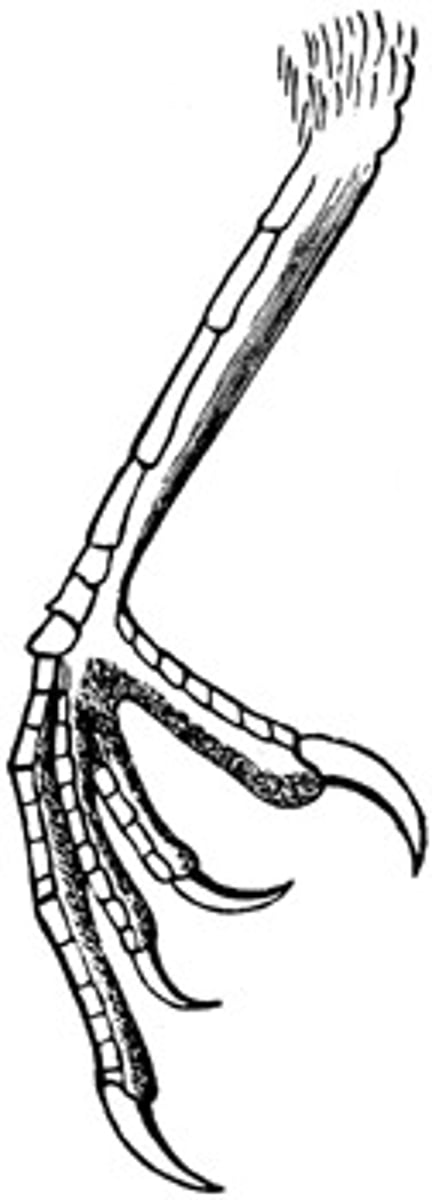
reticulate
small scales

Scutellate-reticulate
scutes and reticulate scales (large and small)

booted (least common)
large scales on toes
special adaptation of birds
- hooked toes for climbing
- long toes for walking
- feathers for warmth "snow shoes"
Bird skeletal system
- bone, cartilage, tendons, and ligaments
- bones are modified to minimize weight (struts inside for structure)
pectoral girdle
scapula, furcula, and coracoid (prevent collapse of chest cavity during wingbeats)
Carina
(keel) attachment point for flight muscles
Muscular system
- skeletal muscle, smooth muscle, cardiac muscle
- cells bound together in muscle fibers (shorten when stimulated by nerves)
- skeletal muscles generally arranged in opposing pairs
Supracoracoideus
raises wing
pectoralis
lowers wing
muscle action
Pectoralis muscle contracts on the downstroke, and the supracoracoideus contracts on the upstroke.
Flight muscles
- make up 20-30% body mass
- most muscle mass carried below the wings (low center of gravity stable
muscles consist of two types of fibers
• Red fibers needed for sustained flight(efficient aerobic metabolism)
• White fibers needed for short-term power(anaerobic metabolism)
• Most skeletal muscles have both types, but ratio differs
Two primary thigh muscles
- iliotibialis extensor
- semitendinosus flexor
Two primary lower leg muscles
- peroneus longus
- gastrocnemius
esophagus
storage organ in birds (like a stomach WITHOUT digestion)
crop
esophageal pocket
crop milk
pigeons and doves specialized crops that make this and they feed the milk to their young (highly nutritious liquid)
Proventriculus
secretes digestive enzymes
gizzard
grinds food (grinding organ)
What do birds eat to help grind food?
small pebbles
small intestine
Digestive organ where most chemical digestion and absorption of food takes place
Large intestine
absorbs water (begins at the junction of the paired ceca)
ceca
aid in fiber digestion
kidneys and intestines
excretion of water and nitrogenous waste
What nitrogenous wastes do birds excrete?
uric acid (concentrated in cloaca)
Cool fact about uric acid
2X as much Nitrogen as urea
where are the kidneys located in birds
inside the fused vertebrae of the back